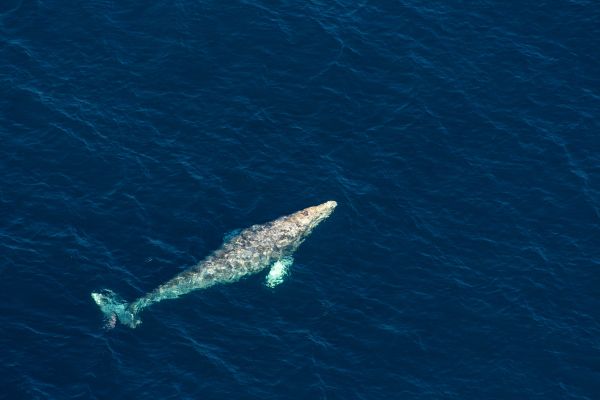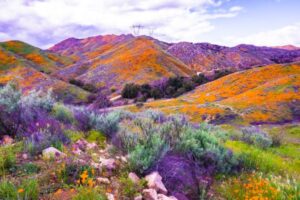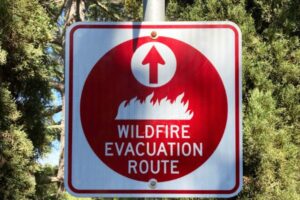One of the most beautiful, mysterious, and most sought-after creations of Mother Earth are the magnificent whales. Whale-watching is one of the world’s most fascinating past-times. Mornings are the best time of day to go whale-watching. Weather conditions are usually best at that time. And, as a result, ocean conditions are calmer. If you are ever in San Francisco, you can head to Point Reyes National Seashore and see the world’s most beautiful ocean animals.
Additionally, if you’re ever in the Gulf of Alaska during the summer, you can catch a glimpse of one of the largest of these majestic creatures: the North Pacific Right Whale. However, the generations after us may only get to read about this creature. They may never get the chance to see these beautiful animals in their natural habitat. This is why our efforts towards saving the North Pacific Right Whale are critical.
About Saving the North Pacific Right Whale
According to Savethewhales.org, the North Pacific Right Whales are the largest of all whale species on earth. There are three right whale species: The North Pacific, North Atlantic, and Southern Right Whale. The North Pacific Right Whale gets its name from the North Pacific Ocean. The North Atlantic Right Whale gets its name from the North Atlantic Ocean. The Southern Right Whale habitation is in the southern hemisphere.
The North Pacific Right Whale is one of 14 species of baleen whales. Meaning, it has whalebone palates in its mouth used to strain for food. Baleen whales feed through a process of straining large amounts of water through its baleen plates. They have very large heads and can swim with their mouths open allowing water to filter in as they move through the ocean. They feed on the zooplankton and copepod crustacean that gets trapped as water filters through their mouths. This is different from other whale species such as the humpback whale. These species feed by engulfing their prey in large lunges. Other Baleen whales include the Blue and Grey whale. Baleen whales are most often larger than toothed whales.
According to Wikipedia, the average length of the North Pacific Right Whale is 45 feet in length. However, their size can range up to as long as 52 feet. And they can weigh more than 70 tons. Surprisingly, female North Pacific Right Whales are typically larger than males. Mating and giving birth are the primary reasons that North Pacific Right Whales migrate. While they have a primary location, the Right Whale species are migratory animals. They travel from the northeast pacific to the southeastern area of the Bering Sea in the summer.
Where does the Right Whale get its name?
The popular belief about the origin of the name “Right Whale” is very simple. Whalers believe this whale received its name because they were the “right whale” to hunt and kill. First off, they moved slowly in the water. This made the whales easy for whalers to catch. In fact, this species of whale often swam near the shore. This made the animals easier for whalers to spot. The Right Whale has always been popular for a large amount of meat. The whale’s bones are also salvaged and used for tools, buggy parts, and children’s toys.
Another factor that earned them the name “Right Whale” is their high amount of blubber. The North Pacific Right Whale has more blubber than other species. This was largely due to their baleen feeding habits. Blubber was very valuable in most early societies. Whale blubber could be boiled down to make whale oil and several other products. And, because of the large amount of blubber, North Pacific Right Whales would float once they were killed. This made towing them to shore easy. Consequently, they were targeted and killed more often than any other whale species.
Any experienced whaler could distinguish a North Pacific Right Whale from other whales. Right Whales have unique patches of white, rough skin on their heads. These white patches help whalers and scientists spot the species. Methods of identification are important if saving the North Pacific Right Whale species is possible.
One of the most endangered whale species.
According to an article by the Food and Environment Reporting Network (FERN), the North Pacific Right Whale was once abundant in number. People could find them living along the coast of Alaska, Japan, and Russia. However, this is no longer the case. The North Pacific Right Whale is now one of the most endangered whale species on earth. In fact, The International Union for Conservation of Nature has categorized them as “Critically Endangered”. An article by treehugger.com states that there were more than 30,000 North Pacific Right Whales slaughtered by whalers in the 19th century.
Whalers have had the North Pacific Right Whale at the top of their list for 100’s of years. Spaniards near the Bay of Biscay reportedly hunted them for their blubber dating back to the 12th Century. Then, in the 1500s, Japanese fishermen hunted the Right Whale from their shores. And in the 1800s Europe and the Americans began to hunt the Right Whale heavily off their shores. But it was Russia who has one of the worst records of North Pacific Right Whale slaughter. During the 1960’s alone, according to FERN, Russian whalers captured and killed nearly 400 right whales.
Finally, Right Whales were added to the endangered species list by the Endangered Species Act (ESA) of 1970. However, much of the damage to the Right Whale population had already taken place. Not only that, illegal commercial whale hunting still continued long after the endangered species act.
Today, North Pacific Right Whale sightings are so rare that many whale-watching expeditions will never see one. The Center for Biological Diversity estimates that there might be less than 100 of these animals left in the North Pacific. They estimate that perhaps only 30 animals remaining who migrate to Alaska in the summer.
What are the factors contributing to the North Pacific Right Whale’s extinction?
Centuries of slaughter from whale hunting have taken their toll on the North Pacific Right Whale population. Now that laws are in place, whale hunters are no longer the primary threat to these beautiful animals. Yet, according to NOAA, there are several environmental and man-made factors contributing to the North Pacific Right Whale’s Extinction.
Plus, whales reproduce slower than other creatures in the ocean. Whales breed only once every 24 months. After conception takes place, the female normally carries the calve for a year. And, as with other mammals, only one calve is born at a time. This is different from most underwater creatures which produce dozens at a time. After giving birth, the female will nurse the café between 5 to 6 months before the female can breed again. Their slow rate of reproduction is what makes saving The North Pacific Right Whale so critical.
Collisions with vessels.
Thanks to the Endangered Species Act (ESA), whalers are no longer the North Pacific Right Whale’s primary threat. Their main threat today is that they may have a collision with a ship in the ocean. Ships running off of the coast of Alaska, Japan, America, and Europe travel at a speed of 20 knots and above. That’s around 25 miles per hour. The Queen Mary 2, a British cruise ship, is 1,000 feet long and can reach a top speed of more than 30 knots. 30 knots are nearly 35 miles per hour. Compare that to the Right whale whose top speed is 3 miles per hour.
A vessel strike can easily injure or, in some cases kill a North Pacific Right Whale. An article published by the National Oceanic and Atmospheric Administration (NOAA) reported on a Right Whale calve that was found dead floating off the shore of New Jersey. According to the article, it had wounds from a propeller across its chest, head, and tail. This discovery prompted a petition to institute speed limits for vessels traveling in the North Atlantic.
Entanglement in fishing gear.
Another major threat facing North Pacific Right Whales are fishing nets, buoy ropes, crab pots, and lobster traps. Whales are among the largest in the sea. Many times they rip the gear out of place and carry it deep into the ocean. And the gear entanglement often grows as the attached gear picks up more ocean debris. The debris obstructs the whale’s ability to swim. These entangled whales will often grow weak and die because of the obstructions.
In other instances, entangled whales have gotten captured by fishing gear. A Right Whale’s natural instinct is to roll and spin once it detects the entanglement. However, this action to free itself often only serves to tighten the entanglement. And, as the ropes tighten, they can even begin to “saw” into the Right Whale’s body… right down to the bone. If left undiscovered for a substantial amount of time, the entangled whale could starve to death. Another danger is that the whale does not have the ability to emerge for air.
There are more than 1,500 documented cases of right whales dying from entanglement in the last 30-years. Experts estimate that 90 percent of North Pacific Right Whales have been entangled at least once in their lifetime. When addressing entanglement, National Oceanic and Atmospheric Administration scientist says Sofie Van Parijs says,
“It’s a slow, painful death,”
Sofie Van Parijs
Endangered but not extinct.
There was once an enormous animal called the West African Black Rhinoceros. This creature flourished in several countries in southeast Africa. An adult male measured over 10 feet long and could weigh more than 800 pounds. This animal must have been an outstanding sight to behold… but this generation cannot see one in its natural habitat. Because the West African Black Rhino is extinct. People believed that their horns carried some sort of medicinal property. Black Rhinos were heavily poached based on this myth. Many rescue efforts were launched over a period of decades to save the Black Rhino. However, the efforts were too late. The West African Black Rhino was officially declared extinct in 2011.
North Pacific Right Whales are critically endangered but not extinct… at least not yet. According to (pick one), more than 21,000 of this species lived in the oceans off the coast of the US and Europe. There are less than 500 animals alive today. Of those 500, less than 100 are breeding females. As a result, birth rates are slower than at any time in history. In fact, the North Atlantic Right Whale population is so low that the breed may already qualify as extinct.
Right Whales are no longer commercially hunted, however, they have not made a recovery to the numbers they had… not even in the early 19th century. Oceanographers agree that this species of whale is at the brink of extinction. If we don’t act fast and put every effort towards saving the North Pacific right whale, they will face the same fate as the West African Rhino.
Saving the North Pacific Right whale.
Whenever a North Pacific Right Whale is spotted, it is a national news-worthy event. There have been several isolated sightings in Baja, California, Mexico, and elsewhere in Western United States waters. Right Whale sightings have also been reported as far west as Hawaii. There have even been some sightings off of the shores of Japan.
The question is, what is being done to save the North Pacific Right Whale?
According to FERN Scientists are helping in the effort. With acoustic technology, they are able to locate Right Whales and monitor their movements throughout the ocean. They track the whales as they do their seasonal migration. And, most importantly, they are able to identify when a Right Whale has become entangled in nets and other fishing gear. They contact federal agencies who scramble to intervene and disentangle the whale. When they act quickly, they are able to save the whale’s life. And each individual whale’s life matters! Sarah Sharp, a veterinarian with the International Fund for Animal Welfare claims that the decline of Right whales is happening quickly. So quickly that they will be extinct by 2040 if we don’t do more to save them. Sarah states,
“The next five years are critical. If we don’t do anything, this species will be functionally extinct in 25 years.”
Sarah Sharp, Veterinarian, International Fund for Animal Welfare
What Can you do to help save the North Pacific Right Whale?
You can participate in saving the North Pacific Right Whale. Contact one of the multiple organizations dedicated to the cause. Here are just a few:
- Savethewhales.org
- The World Cetacean Alliance
- The Center for Biological Diversity
- the Food and Environment Reporting Network (FERN)
- The National Oceanic and Atmospheric Administration (NOAA)
Resources for this post.
- Website: Savethewhales.org
- Alaska department of Fish and Game (ADFG)
- Treehugger.com
- Wikipedia
- Article by National Oceanic and Atmospheric Administration (NOAA)
Conclusion
It is our wish that you find this post enlightening and helpful. If you have any questions or suggestions, we love to hear from you in the comments below. Also, kindly accept our invitation to join our group on Facebook to surround yourself with kindred spirits and post your encouraging messages.












































